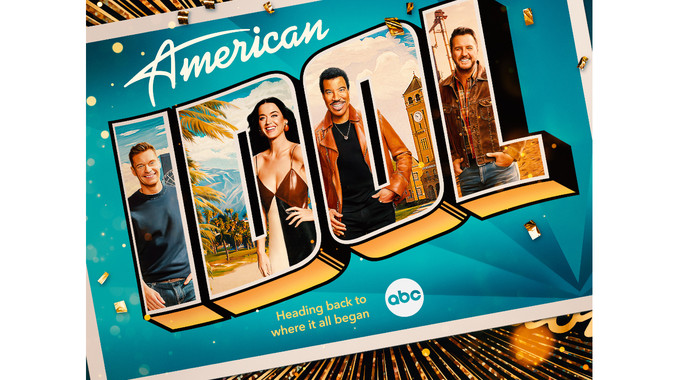October 4th marks the premiere date of “The Good Lord Bird,” Showtime’s limited series about white abolitionist John Brown. Brown went down in history as the leader of the 1859 raid on Harpers Ferry, a three-day standoff in Virginia between Brown’s small company and the U.S. Marines, which he hoped would be the spark that set off a slave rebellion in the Southern states.
The uprising failed, and Brown was tried and hanged for treason shortly thereafter. But his dying statement — “I, John Brown, am now quite certain that the crimes of this guilty land will never be purged away but with blood” — proved to be oracular; the Civil War began a year and a half later in 1861.
“The Good Lord Bird,” based on James McBride’s novel of the same name, tells Brown’s story through the eyes of fictional escaped slave Onion, weaving in dark comedy and historical license. Ethan Hawke, who co-created the show with Mark Richard, stars as John Brown, while Joshua Caleb Johnson plays Onion and “Hamilton” star Daveed Diggs portrays Frederick Douglass.
Though Brown has been portrayed in literature numerous times, most notably in Russell Banks’ Pulitzer-nominated biographical novel “Cloudsplitter,” the only other fictionalized portrayals are dubious at best: Raymond Massey played Brown in Michael Curtiz’s egregiously racist 1940 movie “Santa Fe Trail” and again in Charles Marquis Warren’s 1955 drama “Seven Angry Men.”
Most American school kids end up learning the most famous names in 19th-century American abolitionism: Brown, Douglass, William Lloyd Garrison, Harriet Tubman, Sojourner Truth, Harriet Beecher Stowe. And at least some of their stories have been told on the screen: Tubman was the subject of Kasi Lemmons’ Oscar-nominated “Harriet” starring Cynthia Erivo (which is currently streaming on HBO Max); Spike Lee is slated to direct “Frederick Douglass Now,” a film version of Roger Guenveur Smith’s stage play; and Beecher Stowe’s novel “Uncle Tom’s Cabin” has been adapted (albeit in dubious fashion) numerous times for the screen.
But that’s only a small part of the story. The movement involved countless more orators, writers, rebels, and organizers across the fledgling nation, many of them Black men and women. According to the University of Detroit Mercy’s Black Abolitionist Archive, around 300 African-American abolitionists took an active role in the push to abolish slavery in the United States.
Here’s a primer on just a few of the African-American abolitionists who put their lives and freedom on the line to fight for emancipation in the years leading up to the Civil War. Considering how dramatic and inspiring many of the lives detailed here are, here’s hoping that some of these Black historical figures will be featured in their own miniseries one day.
David Walker (1796–1830)
Two years before William Lloyd Garrison started his abolitionist newspaper “The Liberator,” journalist David Walker penned “An Appeal to the Coloured Citizens of the World” in 1829. Walker’s stirring text called for the end of slavery, and for Black men to liberate themselves from their captors. “America is more our country, than it is the whites,” he wrote. “We have enriched it with our blood and tears.” It was the first public treatise of its kind and made Walker a lightning rod for Southern enmity. He died less than a year after its publication, but his words lit the flame of abolition in America.
Henry “Box” Brown (1815–1897)
Born into slavery in Virginia, Henry “Box” Brown escaped to freedom in dramatic fashion: He closed himself in a wooden box and had a friend mail him to the Philadelphia Anti-Slavery Society. When he reached his destination more than a day later, he emerged from his hiding place with a cheery “How do you do, gentlemen?”
A gifted performer, Brown traveled through the North, telling a dramatized version of his story that helped to turn the tide of public sympathy against slavery. Following the passage of the Fugitive Slave Act in 1850, Brown moved to England and became a magician. Comedian Kevin Hart told Brown’s extraordinary story in an episode of his 2019 Netflix series “Kevin Hart’s Guide to Black History.”
Henry Highland Garnet (1815–1882)
Minister and public speaker Henry Highland Garnet was born into slavery, but fled north with his family as a child and grew up in New York City, later marrying fellow abolitionist Julia Williams. Garnet advocated for a militant brand of abolitionism, encouraging slaves to rise up against their masters in his 1843 speech “Call to Rebellion.” Following the passage of the 13th Amendment, which abolished slavery, Garnet delivered a sermon in the House of Representatives, becoming the first Black man to do so.
William Still (1821–1902)
Known as the “Father of the Underground Railroad,” William Still helped approximately 800 slaves escape to freedom in his 14 years working within the network. A close associate of Harriet Tubman and Frances Ellen Watkins Harper, Still kept detailed records of the people who passed through his “station” in Philadelphia, which he eventually turned into a book after the Civil War.
Still was also an early civil rights activist, successfully lobbying for the desegregation of streetcars in Pennsylvania in the 1860s. PBS made a documentary about Still in 2012, “Underground Railroad: The William Still Story.”
Frances Ellen Watkins Harper (1825–1911)
Frances Ellen Watkins Harper was a multi-hyphenate by any standards — particularly considering that she was a Black woman living in 19th-century America. Born to free parents in Baltimore, Harper was a poet, novelist, teacher, and orator. She traveled giving lectures on abolitionism, women’s suffrage, and temperance. As a writer, she penned numerous works, including the novel “Iola Leroy” and “Two Offers,” the first short story ever to be published by an African-American woman. Harper also co-founded the National Association of Colored Women’s Clubs.
Sarah Parker Remond (1826–1894)
Born into a prosperous, activist family in Salem, Massachusetts, Sarah Parker Remond came out swinging: She delivered her first abolitionist speech when she was only 16 years old. She toured the North and the U.K. giving lectures on the anti-slavery movement and women’s suffrage. She eventually decided to stay in Europe to study, first at the Bedford College for Women in London and later in Florence, Italy, where she became a doctor, practicing medicine for decades. Though she never returned to her home country, she continued to advocate for the rights of Black people in the U.S.
John P. Parker (1827–1900)
John P. Parker became an inventor, businessman, and key figure on the Underground Railroad; but first, he had to work his way out of slavery. The son of a white father and an enslaved mother in Virginia, Parker was sold into slavery at a young age. He learned to read, worked as an iron molder, and eventually bought his freedom. Parker moved to Ohio and started his own foundry while also helping slaves escape from Kentucky in a series of daring rescues, pursued by Confederate bounty hunters. Later in life, he patented multiple industrial inventions. Remarkably, all six of his children went on to have college educations.
![]()
The content is featured on https://www.directv.com/insider/ is editorial content brought to you by DIRECTV. While some of the programming discussed may now or in the future be available affiliates distribution services, the companies and persons discussed and depicted, and the authors and publishers of licensed content, are not necessarily associated with and do not necessarily endorse DIRECTV. When you click on ads on this site you may be taken to DIRECTV marketing pages that display advertising content. Content sponsored or co-created by programmers is identified as "Sponsored Content" or "Promoted Content."






